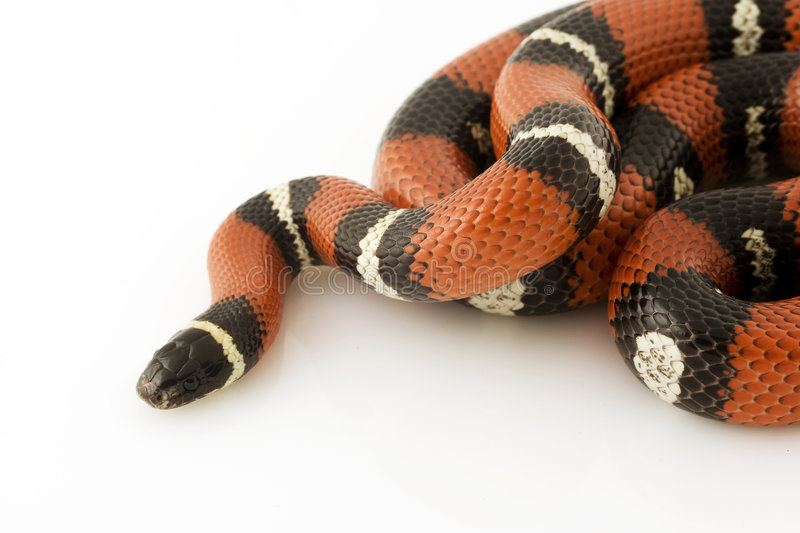ANIMAL: Nelson’s Milksnake Lampropeltis nelsoni Type of Animal: Colubrid Habitat: Semi-arid coastal thorn scrub, forests, plains, watercourses, coastal bush areas, rocky slopes, prairie, rocky outcroppings, fields, agricultural areas, barns Location(s): Mexico from S Guanajuato & C Jalisco to Pacific Coast, as well as NW Michoacan & on Tres Marias Islands Appearance: Red ground color w/ black outer rings & yellowish-whitish inner rings, black & yellow pattern around head, albino morphs relatively common w/ pinkish-whitish ground color, wide red bands, & smaller yellow-white rings Food/Diet: Small mammals, birds, lizards, amphibians, other snakes (including members of own species & venomous species), eggs Status in Wild: Stable Conservation: Breeding in zoos, wildlife centers, & herpetoculture Lifestyle: Solitary Additional Info: Called: Male Female Young-Snakelet Group-Solitary Weight: Male-0.88 lbs Female-1.10 lbs Gestation: 2 months Life Span: 15-20 years Body Length: Male-3.3 ft Female-3.5 ft Young-1.5 ft Tail Length: 1 ft Main predators are raptors, larger snakes, coatis, skunks, foxes, dogs, felines (wild & domestic), corvids, & raccoons. Sexually mature at 1.5 years. They kill prey by constriction. Valuable for keeping populations of rodents & smaller venomous snakes in check. Females lay 2-20 eggs per clutch. While mostly docile, they may musk & even bite if agitated. Younger animals more likely to do this. They breed in May-June. Vibrates tail when threatened, sounding like rattlesnake. Warmer egg temps usually create males while cooler temps create females. Fun Fact(s): Named for American naturalist Edward W. Nelson. Called milk snakes due to false belief they drank milk from cow udders, due to being seen in barns & stables. They can make good pets, due to docile temperament.
